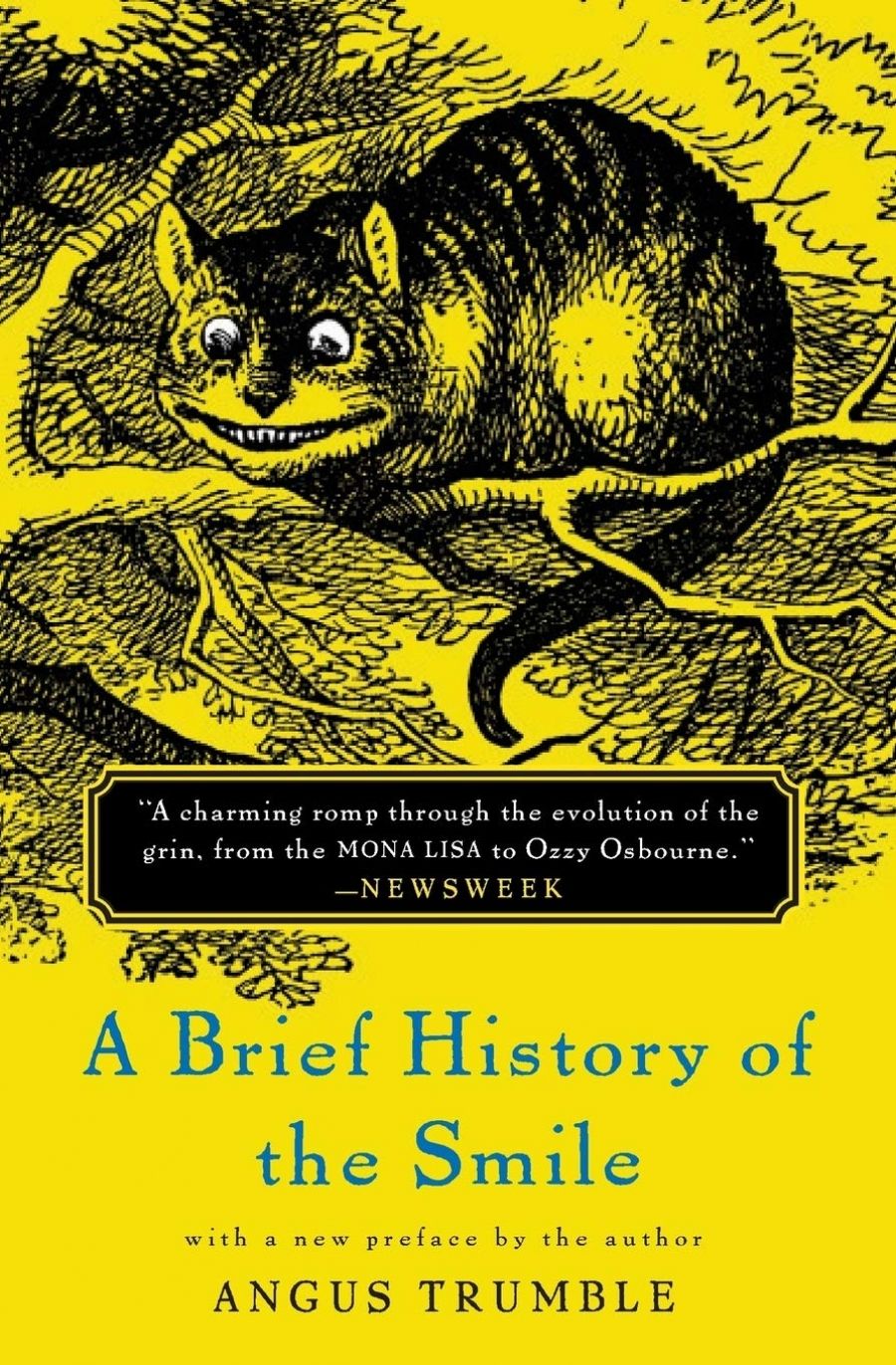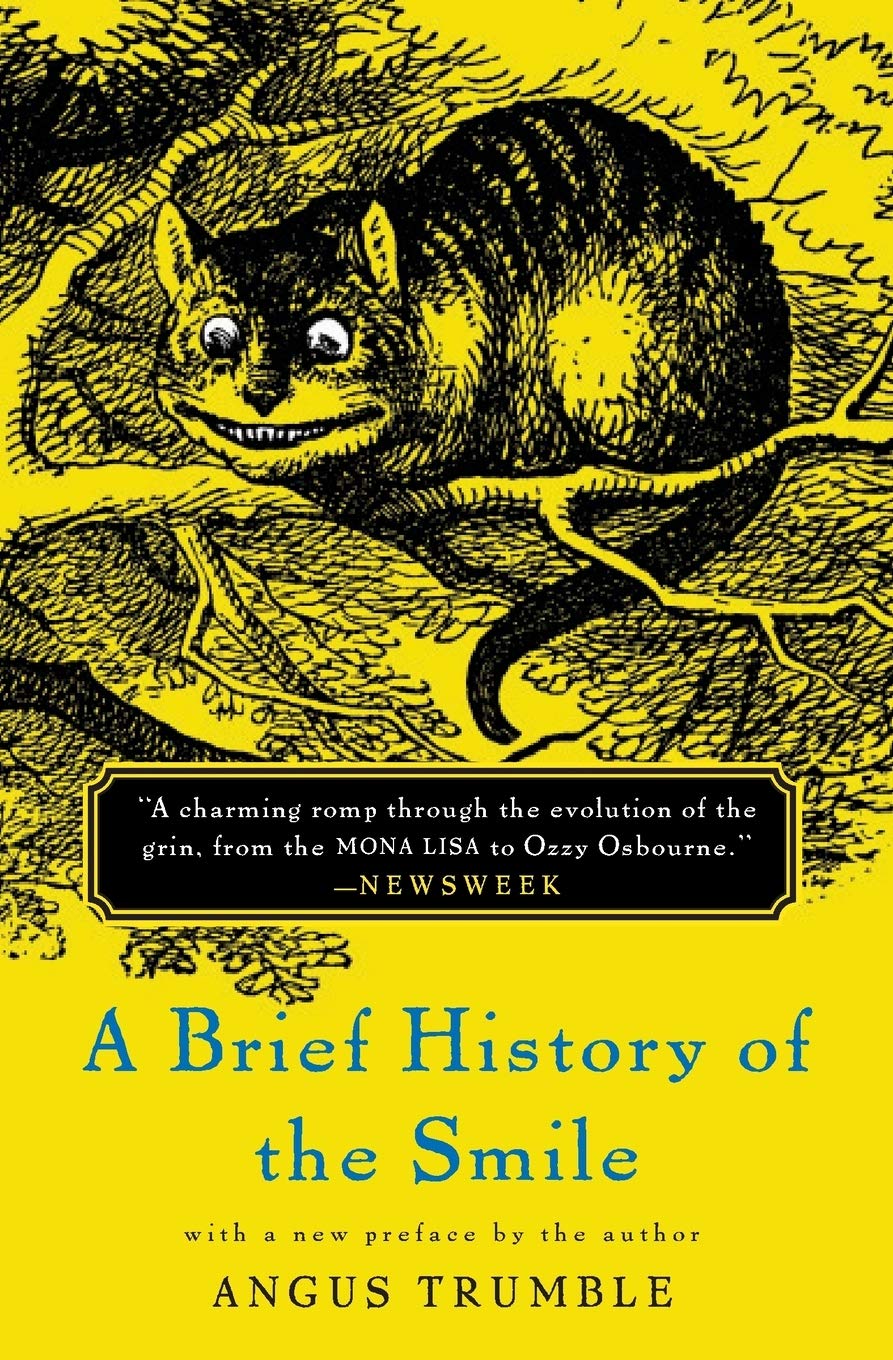
- Free Article: No
- Contents Category: History
- Custom Article Title: Say Marmalade
- Review Article: Yes
- Article Title: Say Marmalade
- Online Only: No
- Custom Highlight Text:
Some years ago, at a busy intersection in Chicago, Popeye’s Fried Chicken sported a notice saying, ‘Now Hiring Smiling Faces’. It seemed to cry out for a poem, or at least a memory. If Angus Trumble’s A Brief History of the Smile does not allude to it, this is not for want of curiosity or vivacity on his part.
- Book 1 Title: A Brief History of the Smile
- Book 1 Biblio: Allen & Unwin, $35 pb, 271 pp
- Book 1 Cover Small (400 x 600):

- Book 1 Cover (800 x 1200):

Trumble understands very well that to cut deeply and precisely enough into any part of human experience is to be given access to the whole lot. Randall Jarrell said that poetry has ‘and-and-and’ meanings, and, in that sense, Trumble’s mind is radically poetical. His book, while conducted in lucid and economical prose, is poetical also in its sense that governance is part of the game – that when the writing is done, the reader is both to be surprised and to be stimulated. Unlike Popeye’s, he is advertising more for intelligence than for physiognomy.
After an introduction that takes its title from Charles Dickens’s ‘the serious and the smirk’, the book is organised around half a dozen motifs and a question. The motifs are: Decorum, Lewdness, Desire, Mirth, Wisdom and Deceit; the question is, Happiness. The whole was occasioned by the author’s being invited to address a conference of dentists and maxillofacial surgeons about the criteria whereby European painters of the eighteenth and nineteenth centuries defined a beautiful face. The upshot has been an ensemble of information and insight that often extends not only beyond the natural purview of those dental custodians of our comfort and happiness, but beyond the immediate reach of art historians.
Here for instance is Hippolyte Taine claiming that ‘meat-eating induced long teeth in English women’; here is George Washington, wearing ‘carved hippopotamus ivory false teeth sprung with wire, which must have been atrociously uncomfortable, presumably unattractive, and prone to snapping open’; here is the surely correct observation that ‘the ancient belief that the eyes are the window of the soul owes less to the distinctive appearance or fascination of the eyeball itself than to the vast expressive range of all the muscles that surround it’; and here is an account of the words favoured by sundry nations in place of ‘cheese’ at the photographic moment – the Swedes opting for ‘omelett’ (sic), the Koreans for their word for cabbage, the Poles for ‘marmalade’, and the Japanese, understandably, putting their faith in the English word ‘whisky’.
Beckett says of one of his characters that he had seen people smile and thought that he knew how to do it. If he should forget the trick, Trumble’s book describes, with a panache that is itself almost Beckettian, how the thing is done: without cranial nerve number VII, you do not have a chance; and that is only the beginning. I doubt whether there is a single page in this book where recourse is not had to the palpable and the visible, but, as is crucial to art history and the connoisseurship that stems from it, all of this fascination with material being aims to tell beyond the measurable. Although Trumble writes as though he would himself have an ironic smile about him when mystification occurs, the whole book is clearly driven in part by wonder.
I remember once being pleased to find that the young Queen Victoria, on returning from a ball, confided to her diary, and underscored the fact, that she had been ‘much amused’; Trumble says: ‘There is no evidence that Queen Victoria ever uttered the stock phrase “We are not amused”’ – an encouraging sign in a world already too grave. He tells us this on the way to an appraisal of the ‘smiling kings, queens, and princes of western Europe following the “Gothic moment” of the twelfth century and its aftermath’; and, in fact, he is often scrupulous in lodging art or artefact in its historical context, while flagging the fact by implication that ‘text’ and context are related in dynamic ways. The book is indeed a kind of intellectual adventure, the preoccupation being not only with what can be known and said, but with how this may best be done.
Besides its bibliography, variously elating and disconcerting in its scope, A Brief History of the Smile is adorned with an index often fired with esprit – as, for example, in the sequence, ‘depression, Dickens, dirty old men, disinhibition, Disraeli, Divine, dogs … ’ It is good to see that Hobbes does not get a guernsey, he who took so grim a view of laughter: but the book is no mere frolic. From one point of view, it is a specialised exercise in history, as the title claims; from another, it offers a kind of anthropology, inasmuch as we may be seen not only as the tool-making animal, or the (periodically) rational one, but as the smiling creature.
Woven through the whole, too, is a philosopher’s attention to whatever is come across. Trumble’s last chapter begins with the words, ‘One of the greatest and enduring achievements of the Enlightenment in Europe was to uphold the right to what the historian Roy Porter calls “the pursuit of temporal happiness as the summum bonum”. How fortunate we are to have inherited this noble idea; how few of us recognise its value and take advantage of it when in so many other places it is denied to so many.’ Even those disposed to take issue with that version of the greatest good may be sobered, and moved, by Trumble’s reflection.
As one who has always envied but never enjoyed the Germanic Sitzfleisch – the scholar’s ability to lodge the body firmly and indefinitely at its task – I think that I can see its fruits in this book. Mind you, it cannot all have been uphill slogging; and perhaps Angus Trumble at times enjoyed such moments as those Pygmies know who, he reports, ‘fall on the ground and kick their legs in the air, wholly possessed by paroxysms of breathless laughter’.


Comments powered by CComment